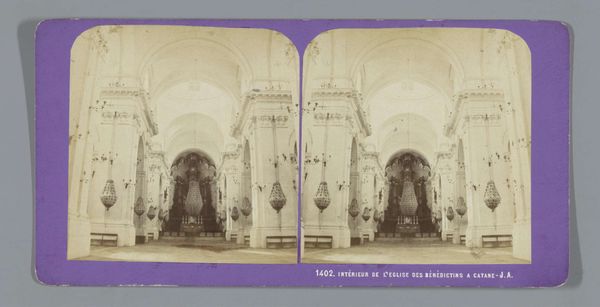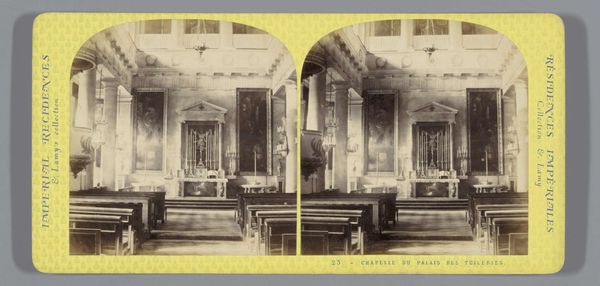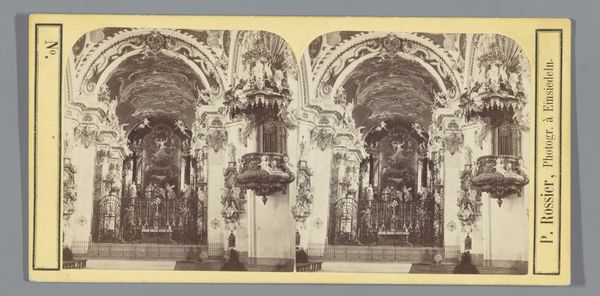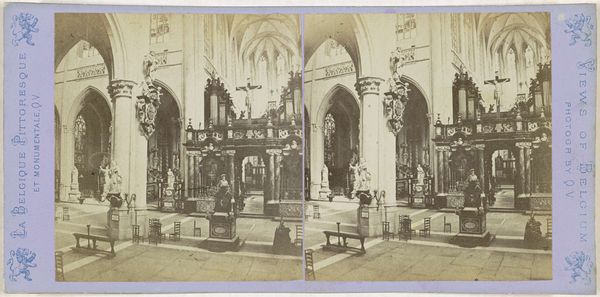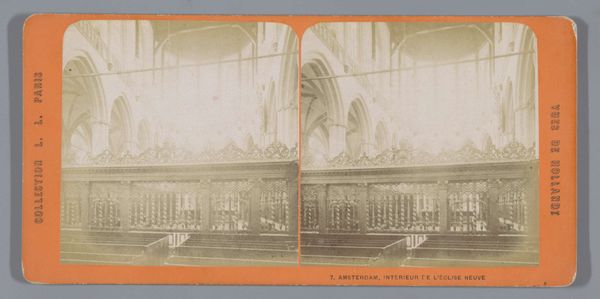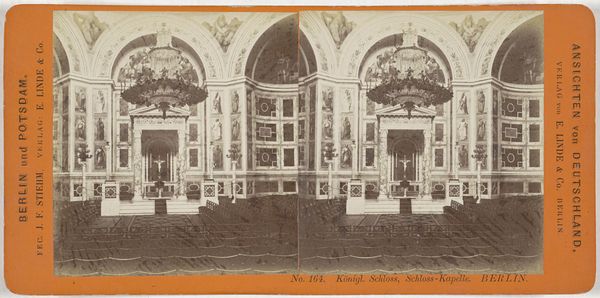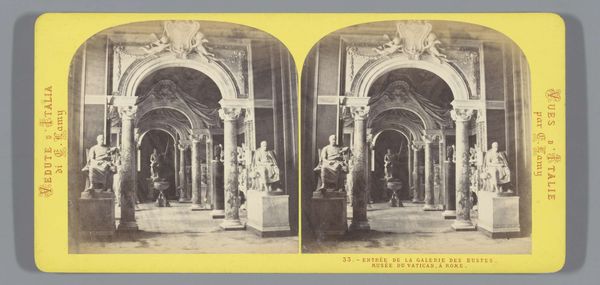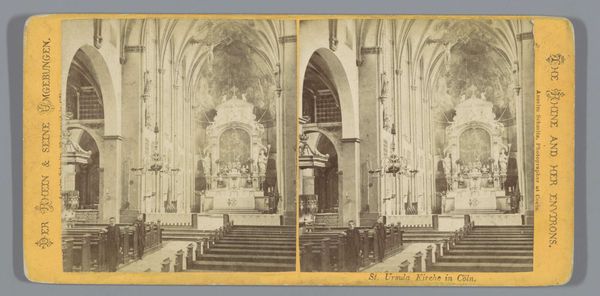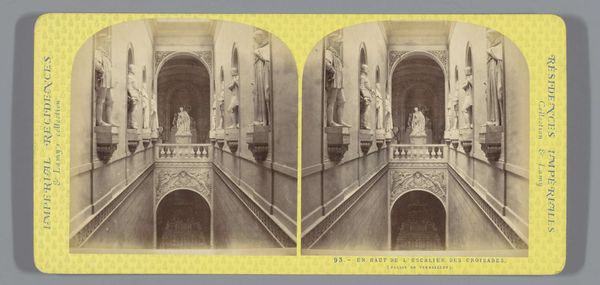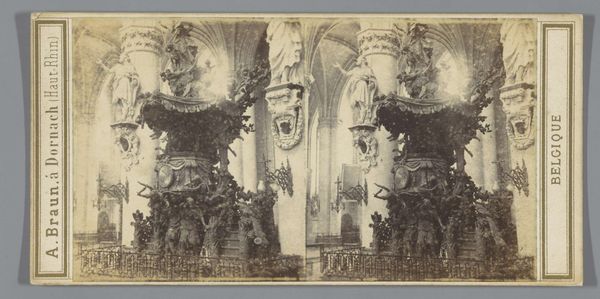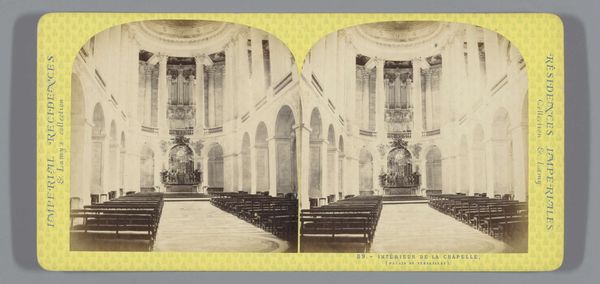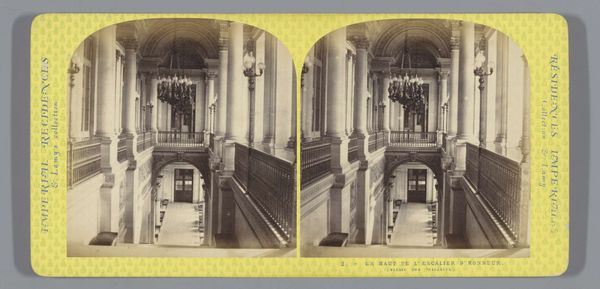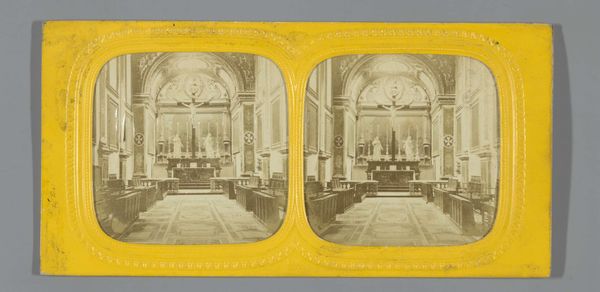
Dimensions: height 85 mm, width 170 mm
Copyright: Rijks Museum: Open Domain
Editor: This gelatin silver print from between 1860 and 1880, titled *Kapel in het Palais du Luxembourg te Parijs* by Ernest Eléonor Pierre Lamy, has such an ethereal feel. The way the light captures the details of the chapel is striking. What do you see in this image, with all its historical weight? Curator: Immediately, I'm drawn to the angelic imagery dominating the apse. Light floods the fresco, which is echoed below in the simple altar; but it is the multitude of figures that truly speaks. Their presence suggests an aspirational, almost idealized space, perhaps more about *longing* than *belonging.* The chapel becomes less a space for communal worship, more an intimate arena for solitary contemplation and introspection. What effect do you think this would have on the viewer in the 19th century? Editor: I suppose the romanticism style would create a spiritual effect, like you're peeking into a holy scene from afar... But looking at it now, what meaning does it have today? Curator: Today, knowing the tumultuous history that has followed, and seeing through a secular lens, it's harder for me to dismiss the underlying commentary implicit in the original design and use of the chapel. Does the presence of a visible angel point to power or solace, when presented to a diverse, perhaps even jaded audience today? In this photograph, does the romantic presentation itself challenge the church's status as a sanctuary? Editor: That's a really fascinating point. The chapel feels frozen in time. Curator: Precisely. And the photograph, as a historical document, layers *another* level of interpretation to how these charged, romantic images operate on us, even now. The symbolism embedded here becomes ever more intriguing. Editor: That’s given me so much to think about when looking at historical photographs. Thanks!
Comments
No comments
Be the first to comment and join the conversation on the ultimate creative platform.
